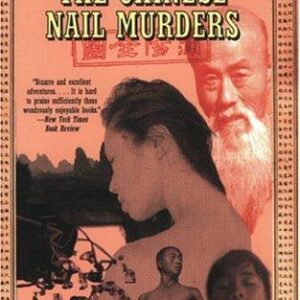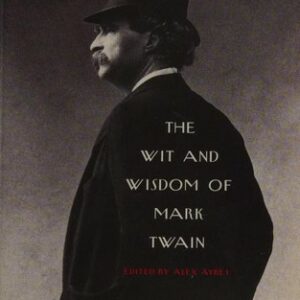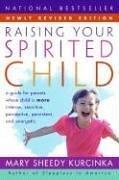A Raisin in the Sun
$8.99
| Title | Range | Discount |
|---|---|---|
| Trade Discount | 5 + | 25% |
- Description
- Additional information
Description
Under the editorship of the late Robert Nemiroff, with a provocative and thoughtful introduction by preeminent African-American scholar Margaret B. Wilkerson and a commentary by Spike Lee, this completely restored screenplay is the accurate and authoritative edition of Lorraine Hansberry’s script and a testament to her unparalled accomplishment as a Black artist.
The 1961 film version of A Raisin in the Sun, with a screenplay by the author, Lorraine Hansberry, won an award at the Cannes Film Festival even though one-third of the actual screenplay Hansberry had written had been cut out. The film did essentially bring Hansberry’s extraordinary play to the screen, but it failed to fulfill her cinematic vision.
Now, with this landmark edition of Lorraine Hansberry’s original script for the movie of A Raisin in the Sun that audiences never viewed, readers have at hand an epic, eloquent work capturing not only the life and dreams of a Black family, but the Chicago—and the society—that surround and shape them.
Important changes in dialogue and exterior shots, a stunning shift of focus to her male protagonist, and a dramatic rewriting of the final scene show us an artist who understood and used the cinematic medium to transform a stage play into a different art form—a profound and powerful film.Praise for A Raisin in the Sun
“One of the handful of great American plays—it belongs in the inner circle, along with Death of a Salesman, Long Day’s Journey Into Night, and The Glass Menagerie.”—The Washington Post
“The play that changed American theater forever.”—Frank Rich, The New York Times
“A beautiful, lovable play. It is affectionately human, funny and touching….A work of theatrical magic in which the usual barrier between audience and stage disappears.”—John Chapman, New York News
“An honest, intelligible, and moving experience.”—Walter Kerr, New York Herald Tribune
“Miss Hansberry has etched her characters with understanding, and told her story with dramatic impact. She has a keen sense of humor, an ear for accurate speech and compassion for people.”—Robert Coleman, New York Mirror
“It is honest drama, catching up real people….It will make you proud of human beings.”—Frank Aston, New York World-Telegram & Sun
“A wonderfully emotional evening.”—John McClain, New York Journal AmericanLorraine Hansberry (1930-1965) electrified the theatrical world with her first play, A Raisin in the Sun, which won the New York Critics Circle Award for the 1958-59 season. Before her tragic death from cancer at the age of 34, she had already produced a remarkable body of work, including The Sign in Sidney Brustein’s Window and Les Blancs. Her former husband and literary executor, the late Robert Nemiroff, posthumously produced and published her To Be Young, Gifted and Black and the musical Raisin.
Robert Nemiroff (1929–1991) was a Broadway producer and the literary executor of Lorraine Hansberry’s estate.INTRODUCTION
by Robert Nerniroff
This is the most complete edition of A Raisin in the Sun ever published. Like the American Playhouse production for television, it restores to the play two scenes unknown to the general public, and a number of other key scenes and passages staged for the first time in twenty-fifth anniversary revivals and, most notably, the Roundabout Theatre’s Kennedy Center production on which the television picture is based.
"The events of every passing year add resonance to A Raisin in the Sun. It is as if history is conspiring to make the play a classic"; ". . . one of a handful of great American dramas … A Raisin in the Sun belongs in the inner circle, along with Death of a Salesman, Long Day’s Journey into Night, and The Glass Menagerie." So wrote The New York Times and the Washington Post respectively of Harold Scott’s revelatory stagings for the Roundabout in which most of these elements, cut on Broadway, were restored. The unprecedented resurgence of the work (a dozen regional revivals at this writing, new publications and productions abroad, and now the television production that will be seen by millions) prompts the new edition.
Produced in 1959, the play presaged the revolution in black and women’s consciousness-and the revolutionary ferment in Africa-that exploded in the years following the playwright’s death in 1965 to ineradicably alter the social fabric and consciousness of the nation and the world. As so many have commented lately, it did so in a manner and to an extent that few could have foreseen, for not only the restored material, but much else that passed unnoticed in the play at the time, speaks to issues that are now inescapable: value systems of the black family; concepts of African American beauty and identity; class and generational conflicts; the relationships of husbands and wives, black men and women; the outspoken (if then yet unnamed) feminism of the daughter; and, in the penultimate scene between Beneatha and Asagai, the larger statement of the play and the ongoing struggle it portends.
Not one of the cuts, it should be emphasized, was made to dilute or censor the play or to "soften" its statement, for everyone in that herculean, now-legendary band that brought Raisin to Broadway-and most specifically the producer, Philip Rose, and director, Lloyd Richards-believed in the importance of that statement with a degree of commitment that would have countenanced nothing of the kind. How and why, then, did the cuts come about?
The scene in which Beneatha unveils her natural haircut is an interesting example. In 1959, when the play was presented, the rich variety of Afro styles introduced in the mid-sixties had not yet arrived: the very few black women who wore their hair unstraightened cut it very short. When the hair of Diana Sands (who created the role) was cropped in this fashion, however, a few days before the opening, it was not contoured to suit her: her particular facial structure required a fuller Afro, of the sort she in fact adopted in later years. Result? Rather than vitiate the playwright’s point-the beauty of black hair-the scene was dropped.
Some cuts were similarly the result of happenstance or unpredictables of the kind that occur in any production: difficulties with a scene, the "processes" of actors, the dynamics of staging, etc. But most were related to the length of the play: running time. Time in the context of bringing to Broadway the first play by a black (young and unknown) woman, to be directed, moreover, by another unknown black "first," in a theater where black audiences virtually did not exist-and where, in the entire history of the American stage, there had never been a serious commercially successful black drama!
So unlikely did the prospects seem in that day, in fact, to all but Phil Rose and the company, that much as some expressed admiration for the play, Rose’s eighteen-month effort to find a co-producer to help complete the financing was turned down by virtually every established name in the business. He was joined at the last by another newcomer, David Cogan, but even with the money in hand, not a single theater owner on the Great White Way would rent to the new production! So that when the play left New York for tryouts-with a six-hundred-dollar advance in New Haven and no theater to come back to-had the script and performance been any less ready, and the response of critics and audiences any less unreserved than they proved to be, A Raisin in the Sun would never have reached Broadway.
Under these circumstances the pressures were enormous (if unspoken and rarely even acknowledged in the excitement of the work) not to press fate unduly with unnecessary risks. And the most obvious of these was the running time. It is one thing to present a four-and-a-half-hour drama by Eugene O’Neill on Broadway-but a first play (even ignoring the special features of this one) in the neighborhood of even three??? By common consensus, the need to keep the show as tight and streamlined as possible was manifest. Some things-philosophical flights, nuances the general audience might not understand, shadings, embellishments, would have to be sacrificed.
At the time the cuts were made (there were also some very good ones that focused and strengthened the drama), it was assumed by all that they would in no way significantly affect or alter the statement of the play, for there is nothing in the omitted lines that is not implicit elsewhere in, and throughout, A Raisin in the Sun. But to think this was to reckon without two factors the future would bring into play. The first was the swiftness and depth of the revolution in consciousness that was coming and the consequent, perhaps inevitable, tendency of some people to assume, because the "world" had changed, that any "successful" work which preceded the change must embody the values they had outgrown. And the second was the nature of the American audience.
James Baldwin has written that "Americans suffer from an ignorance that is not only colossal, but sacred." He is referring to that apparently endless capacity we have nurtured through long years to deceive ourselves where race is concerned: the baggage of myth and preconception we carry with us that enables northerners, for example, to shield themselves from the extent and virulence of segregation in the North, so that each time an "incident" of violence so egregious that they cannot look past it occurs they are "shocked" anew, as if it had never happened before or as if the problem were largely passe. (In 1975, when the cast of Raisin, the musical, became involved in defense of a family whose home in Queens, New York City, had been fire-bombed, we learned of a 1972 City Commissioner of Human Rights Report, citing "eleven cases in the last eighteen months in which minority-owned homes had been set afire or vandalized, a church had been bombed, and a school bus had been attacked"-in New York City!)
But Baldwin is referring also to the human capacity, where a work of art is involved, to substitute, for what the writer has written, what in our hearts we wish to believe. As Hansberry put it in response to one reviewer’s enthusiastic if particularly misguided praise of her play: ". . . it did not disturb the writer in the least that there is no such implication in the entire three acts. He did not need it in the play; he had it in his head."’
Such problems did not, needless to say, stop America from embracing A Raisin in the Sun. But it did interfere drastically, for a generation, with the way the play was interpreted and assessed-and, in hindsight, it made all the more regrettable the abridgment (though without it would we even know the play today?). In a remarkable rumination on Hansberry’s death, Ossie Davis (who succeeded Sidney Poitier in the role of Walter Lee) put it this way:
The play deserved all this-the playwright deserved all this, and more. Beyond question! But I have a feeling that for all she got, Lorraine Hansberry never got all she deserved in regard to A Raisin in the Sun-that she got success, but that in her success she was cheated, both as a writer and as a Negro.
One of the biggest selling points about Raisin-filling the grapevine, riding the word-of-mouth, laying the foundation for its wide, wide acceptance-was how much the Younger family was just like any other American family. Some people were ecstatic to find that "it didn’t really have to be about Negroes at all!" It was, rather, a walking, talking, living demonstration of our mythic conviction that, underneath, all of us Americans, color-ain’t-got-nothing-to-do-with-it, are pretty much alike. People are just people, whoever they are; and all they want is a chance to be like other people. This uncritical assumption, sentimentally held by the audience, powerfully fixed in the character of the powerful mother with whom everybody could identify, immediately and completely, made any other questions about the Youngers, and what living in the slums of Southside Chicago had done to them, not only irrelevant and impertinent, but also disloyal … because everybody who walked into the theater saw in Lena Younger … his own great American Mama. And that was decisive.
In effect, as Davis went on to develop, white America "kidnapped" Mama, stole her away and used her fantasized image to avoid what was uniquely African-American in the play. And what it was saying.
Thus, in many reviews (and later academic studies), the Younger family-maintained by two female domestics and a chauffeur, son of a laborer dead of a lifetime of hard labor-was transformed into an acceptably "middle class" family. The decision to move became a desire to "integrate" (rather than, as Mama says simply, "to find the nicest house for the least amount of money for my family… Them houses they put up for colored in them areas way out always seem to cost twice as much.").
In his "A Critical Reevaluation: A Raisin in the Sun’s Enduring Passion," Amiri Baraka comments aptly: "We missed the essence of the work-that Hansberry had created a family on the cutting edge of the same class and ideological struggles as existed in the movement itself and among the people…. The Younger family is part of the black majority, and the concerns I once dismissed as ‘middle class’-buying a home and moving into ‘white folks’ neighborhoods’-are actually reflective of the essence of black people’s striving and the will to defeat segregation, discrimination, and national oppression. There is no such thing as a ‘white folks’ neighborhood’ except to racists and to those submitting to racism.
Mama herself-about whose "acceptance" of her "place" in the society there is not a word in the play, and who, in quest of her family’s survival over the soul- and body-crushing conditions of the ghetto, is prepared to defy housing-pattern taboos, threats, bombs, and God knows what else-became the safely "conservative" matriarch, upholder of the social order and proof that if one only perseveres with faith, everything will come out right in the end and the-system-ain’t-so-bad-after-all. (All this, presumably, because, true to character, she speaks and thinks in the language of her generation, shares their dream of a better life and, like millions of her counterparts, takes her Christianity to heart.) At the same time, necessarily, Big Walter Younger-the husband who reared this family with her and whose unseen presence and influence can be heard in every scene-vanished from analysis.
And perhaps most ironical of all to the playwright, who had herself as a child been almost killed in such a real-life story, the climax of the play became, pure and simple, a "happy ending"-despite the fact that it leaves the Younger s on the brink of what will surely be, in their new home, at best a nightmare of uncertainty. ("If he thinks that’s a happy ending," said Hansberry in an interview, "I invite him to come live in one of the communities where the Youngers are going!") Which is not even to mention the fact that that little house in a blue-collar neighborhood-hardly suburbia, as some have imagined-is hardly the answer to the deeper needs and inequities of race and class and sex that Walter and Beneatha have articulated.
When Lorraine Hansberry read the reviews-delighted by the accolades, grateful for the recognition, but also deeply troubled-she decided in short order to put back many of the materials excised. She did that in the 1959 Random House edition, but faced with the actuality of a prize-winning play, she hesitated about some others which, for reasons now beside the point, had not in rehearsal come alive. She later felt, however, that the full last scene between Beneatha and Asagai (drastically cut on Broadway) and Walter’s bedtime scene with Travis (eliminated entirely) should be restored at the first opportunity, and this was done in the 1966 New American Library edition. As anyone who has seen the recent productions will attest, they are among the most moving (and most applauded) moments in the play.
Because the visit of Mrs. Johnson adds the costs of another character to the cast and ten more minutes to the play, it has not been used in most revivals. But where it has been tried it has worked to solid-often hilarious-effect. It can be seen in the American Playhouse production, and is included here in any case, because it speaks to fundamental issues of the play, makes plain the reality that waits the Youngers at the curtain, and, above all, makes clear what, in the eyes of the author, Lena Younger-in her typicality within the black experience-does and does not represent.
Another scene-the Act 1, Scene Two moment in which Beneatha observes and Travis gleefully recounts his latest adventure in the street below-makes tangible and visceral one of the many facts of ghetto life that impel the Youngers’ move. As captured on television and published here for the first time, it is its own sobering comment on just how "middle class" a family this is.
A word about the stage and interpretive directions. These are the author’s original directions combined, where meaningful to the reader with the staging insights of two great directors and companies: Lloyd Richards’ classic staging of that now-legendary cast that first created the roles; and Harold Scott’s, whose searching explorations of the text in successive revivals over many years-culminating in the inspired production that broke box office records at the Kennedy Center and won ten awards for Scott and the company-have given the fuller text, in my view, its most definitive realization to date.
Finally, a note about the American Playhouse production. Unlike the drastically cut and largely one-dimensional 1961 movie version-which, affecting and pioneering though it may have been, reflected little of the greatness of the original stage performances-this new screen version is a luminous embodiment of the stage play as reconceived, but not altered, for the camera, and is exquisitely performed. That it is, is due inextricably to producer Chiz Schultz’s and director Bill Duke’s unswerving commitment to the text; Harold Scott’s formative work with the stage company; Duke’s own fresh insights and the cinematic brilliance of his reconception and direction for the screen; and the energizing infusion into this mix of Danny Glover’s classic performance as Walter Lee to Esther Rolle’s superlative Mama. As in the case of any production, I am apt to question a nuance here and there, and regrettably, because of a happenstance in production, the Walter-Travis scene has been omitted. But that scene will, I expect, be restored in the videocassette version of the picture, which should be available shortly. It is thus an excellent version for study.
What is for me personally, as a witness to and sometime participant in the foregoing events, most gratifying about the current revival is that today, some twenty-nine years after Lorraine Hansberry, thinking back with disbelief a few nights after the opening of Raisin, typed out these words-
… I had turned the last page out of the typewriter and pressed all the sheets neatly together in a pile, and gone and stretched out face down on the living room floor. I had finished a play; a play I had no reason to think or not think would ever be done; a play that I was sure no one would quite understand . . . .
-her play is not only being done, but that more than she had ever thought possible-and more clearly than it ever has been before-it is being "understood."
Yet one last point that I must make because it has come up so many times of late. I have been asked if I am not surprised that the play still remains so contemporary, and isn’t that a "sad" commentary on America? It is indeed a sad commentary, but the question also assumed something more: that it is the topicality of the play’s immediate events-i.e., the persistence of white opposition to unrestricted housing and the ugly manifestations of racism in its myriad forms-that keeps it alive. But I don’t believe that such alone is what explains its vitality at all. For though the specifics of social mores and societal patterns will always change, the decline of the "New England territory" and the institution of the traveling salesman does not, for example, "date" Death of a Salesman, any more than the fact that we now recognize love (as opposed to interfamilial politics) as a legitimate basis for marriage obviates Romeo and Juliet. If we ever reach a time when the racial madness that afflicts America is at last truly behind us-as obviously we must if we are to survive in a world composed four-fifths of peoples of color-then I believe A Raisin in the Sun will remain no less pertinent. For at the deepest level it is not a specific situation but the human condition, human aspiration, and human relationships-the persistence of dreams, of the bonds and conflicts between men and women, parents and children, old ways and new, and the endless struggle against human oppression, whatever the forms it may take, and for individual fulfillment, recognition, and liberation-that are at the heart of such plays. It is not surprising therefore that in each generation we recognize ourselves in them anew.
Croton-on-Hudson, N.Y.
October 1988US
Additional information
| Weight | 4.8 oz |
|---|---|
| Dimensions | 0.6700 × 4.1900 × 6.8800 in |
| Imprint | |
| ISBN-13 | |
| Author | Lorraine Hansberry, Robert Nemiroff, Spike Lee, Margaret B. Wilkerson |
| Audience | |
| BISAC | |
| Subjects | screenplays, american literature, american dream, langston hughes, plays, books by black authors, sociology books, african american books, screenplay, black books, theatre, movie scripts, PER016000, spike lee, african american theater, black America, American theatre, a raisin in the sun, moral issues, african american history, african american, relationships, classic, SOC001000, drama, Prejudice, Sociology, theater, black history, racism, segregation, play, civil rights, poverty, struggle, family life, literary fiction, black authors |
| Format |











